


- This event has passed.
Scorpio Full Moon Meditation
08/11/2022 @ 11:30 am - 12:00 pm
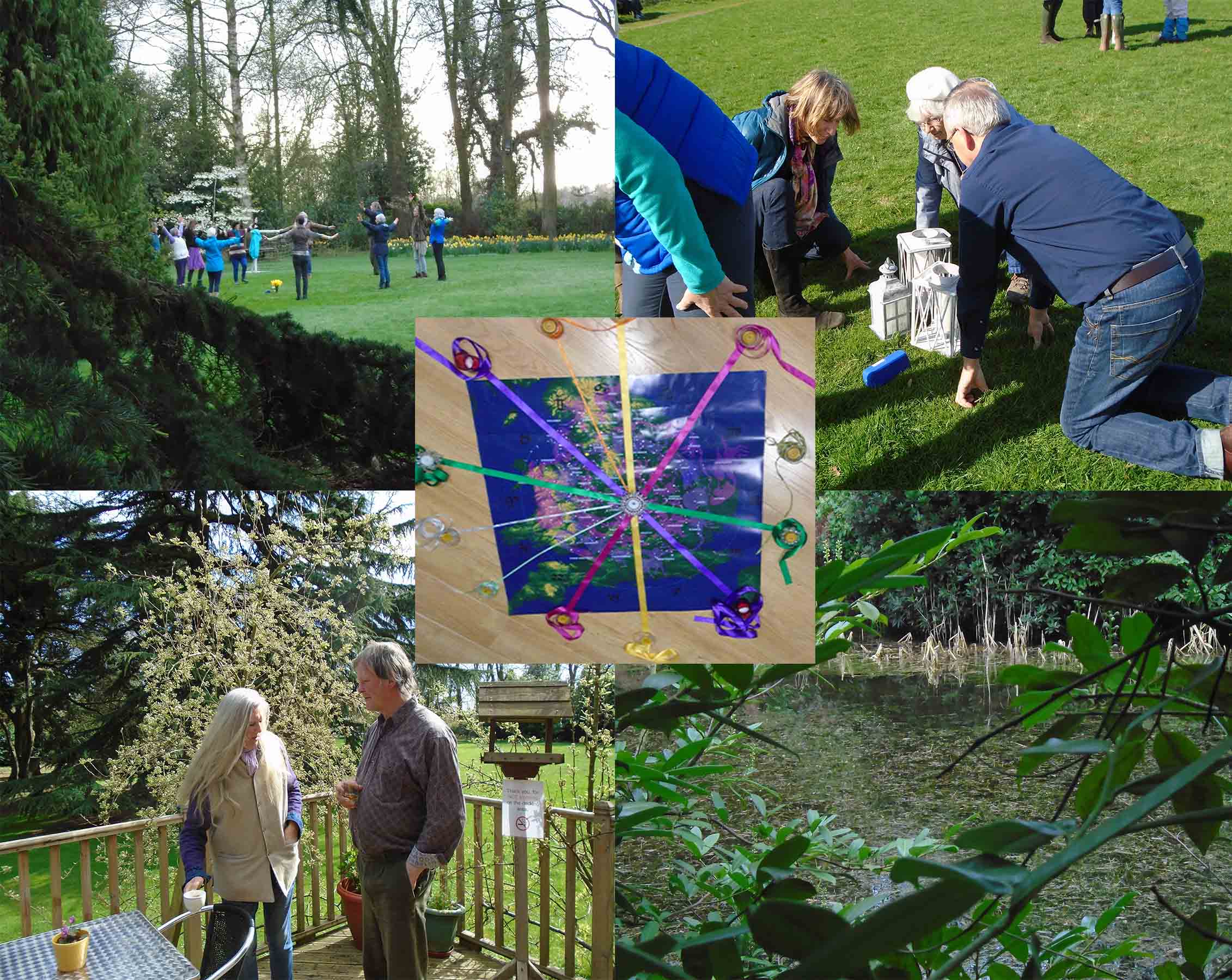
FULL MOON MEDITATION
SUN IN SCORPIO, MOON IN TAURUS
Wheel of Life 2016 to 2022
Festival of Samhain
Transformation through reminiscing the ‘old trackways’ of our local ‘liminal’ spaces.
and working with the enchantments of the spirit of the landscape,.
Purley Chase Centre - the landscape is calling us into a landscape ‘wheel’ of wonder and beauty. Between all major boundaries we weave networks of beauty.
When, in preparing for our vision of a ‘centre’ or homeland, for our activities, I took a solitary pilgrimage ‘reccy’ in and around High Cross. The Purley Chase Centre was the only feasible place offering a meeting space and accommodation, so I dropped in. Then the miracle happened, as I explored the area around, there was Hartshill, Oldbury and Atherstone (Arthur’s Stone?). Mounds hidden in the woodland called and beckoned as did the locality and its names. We only found out what they meant when reading ‘The Holy Kingdom’ by Adrian Gilbert who developed the research of two Welsh historians. In it he found that these burial mounds held the answer to the story of the Welsh King Arthurs and a hidden history of King Bran and his Beloved. Then in our weekends in 2015 and 2016, we as a trust, started searching for an answer to a hidden intuitive quest for a ‘centre’ in the landscape of Britain.
Our candle mandala was the sacred logo for our vision: a centre with connecting radiance and boundaries.
The ‘genius loci’ had spoken, had drawn us in, and for me on the ground the ancient tracks had lured me through my feet into a secret doorway into the past Celtic mythologies of our land:
Wikipedia: …’a genius loci (plural genii locorum) was the protective spirit of a place. It was often depicted in religious iconography as a figure holding attributes such as a cornucopia, patera (libation bowl) or snake.’ [from Roman culture].
A book edited by Caroline Wise ‘Finding Elen’ explores how ancient trackways hold a ‘feminine spirit’ that links pre-Roman hilltop sanctuaries and early prehistoric temples of stone. It is this that enchants us and bonds us to our homeland around where we live.
The origins of Gatekeeper’s first pilgrimages were at the Kingston Zodiac, in the area of Sagittarius/Scorpio cusp. This was the home landscape of Gatekeeper's founding members Maggi Fielder and Richard Douglas. They joined Mary Caine - author of the book The Kingston Zodiac. This is also her home ground. Her research into this lead to many descriptions of the qualities of each area of the circle… unique observations from one who was enchanted by the notion of the ‘liminal world’ of human-earth transformation. :
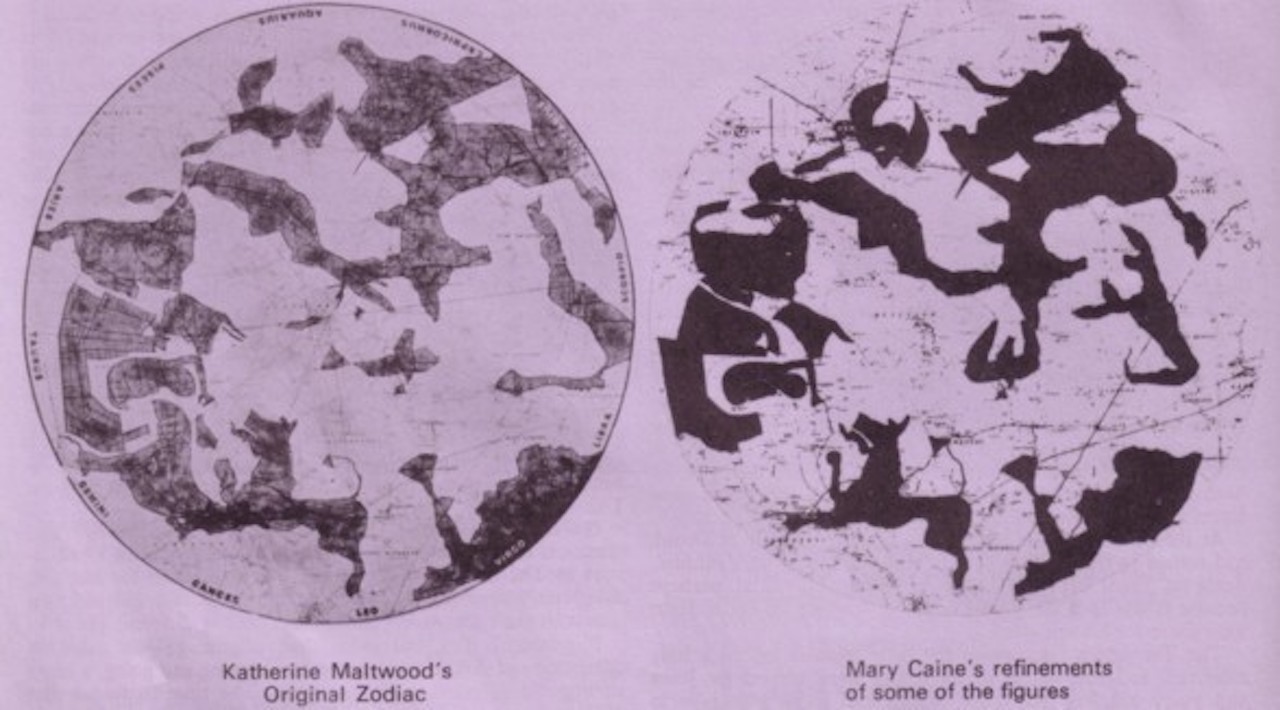
‘The Glastonbury Zodiac' was 'refined' by Mary Caine in the 1960's (left hand image), and has been expanded upon since by local pilgrims.
Inspired in the early 1980’s by her authentic description and analysis (the sign of Virgo contains more computer-based companies than any other area, and the sign of Gemini contained records of an extraordinary amount of births of twins), inspired me to look into landscape zodiac analysis. I have began recording my findings in Dartmoor and Exmoor, using research techniques of etymylogical analysis.of place names, and symbolic interpretations of sanctuaries and built environments. There are concrete confirmations in both Exmoor and Dartmoor, my ‘home’ landscapes from father’s family in Plympton, Dartmoor, and later my marriage to Frank in Exmoor.
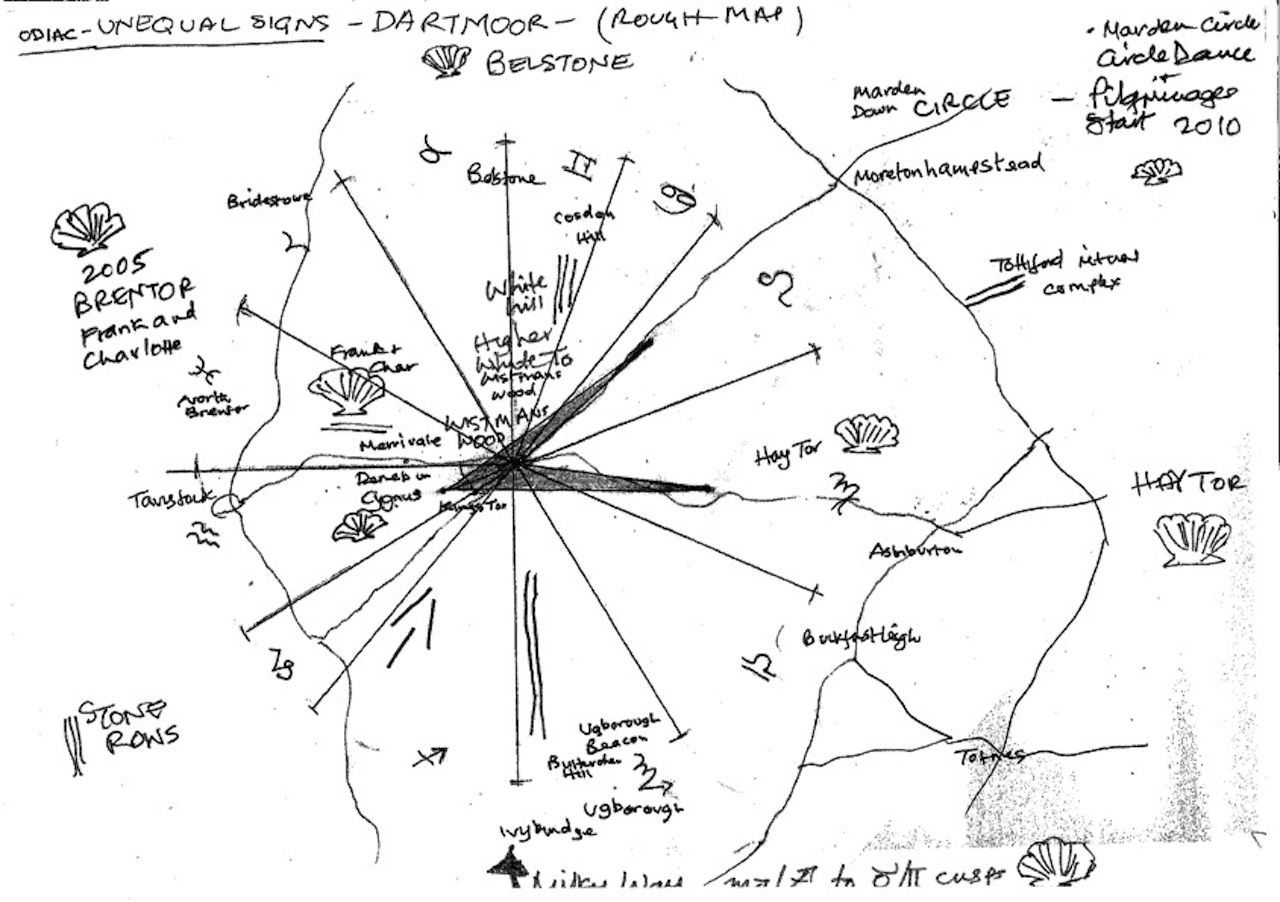
A draft working diagram of Dartmoor, with correlations on place names, location mythologies. My father and mother met near Two Bridges on a tenting holiday, my grand parents initiated us into the ’family secret’ of luminous moss in a cave on Dartmoor, and my grandfather travelled regularly in Dartmoor recording his experience in a diary.
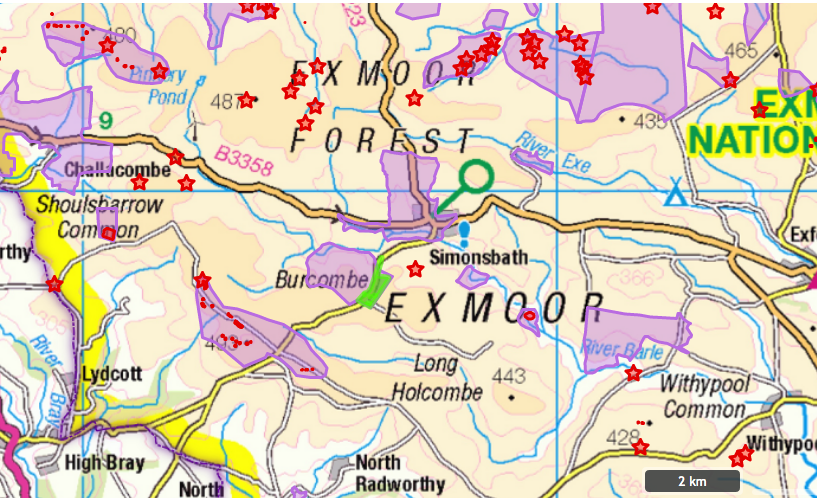
Simonsbath in the centre of Exmoor, has a valley walk to Cow Castle, and two other valleys giving access to the junction of three rivers at its heart.
During the last year I have collected my photos and research intuitions together regarding where my homes have been: Winchester, Bristol, London, Exmoor and Dartmoor, all gave me so much nourishment and inspiration. I captured my enchantment with artwork. I followed Gatekeeper’s encouragement to go looking for the secret trackways and name origins of sacred sites, standing stones and hills…. and star maps: were they really there? What were these places designed to do, what do they need from me - what beauty do they encapsulate? What do they teach and how do they fit into the larger ‘wheel’ of Britain? My sense was that each little ancient path was connected to the major ‘lines’ of energy and symbology, thus we are connected to a wondrous whole, a country to which we have been called to belong.
Creating artwork with my personal ‘genius loci’ or genius of the land in my home locations of spiritual meaning::
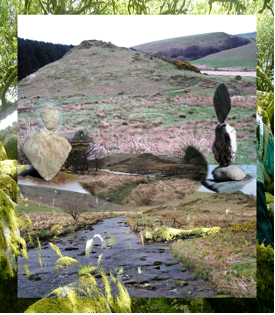
Cow Castle, centre of Exmoor, depicted as a collage of photos and glue. This started an inner journey of creative rapport with landscapes using a series of photo montages of landscapes I loved, adjusting them with Photoshop. (Cow Castle, Charlotte Yonge 2016)

Capturing the reflections of water in between quartz rock: a different universe emerges. (Nature is Our Teacher cards, Exmoor: Charlotte Yonge 2016)
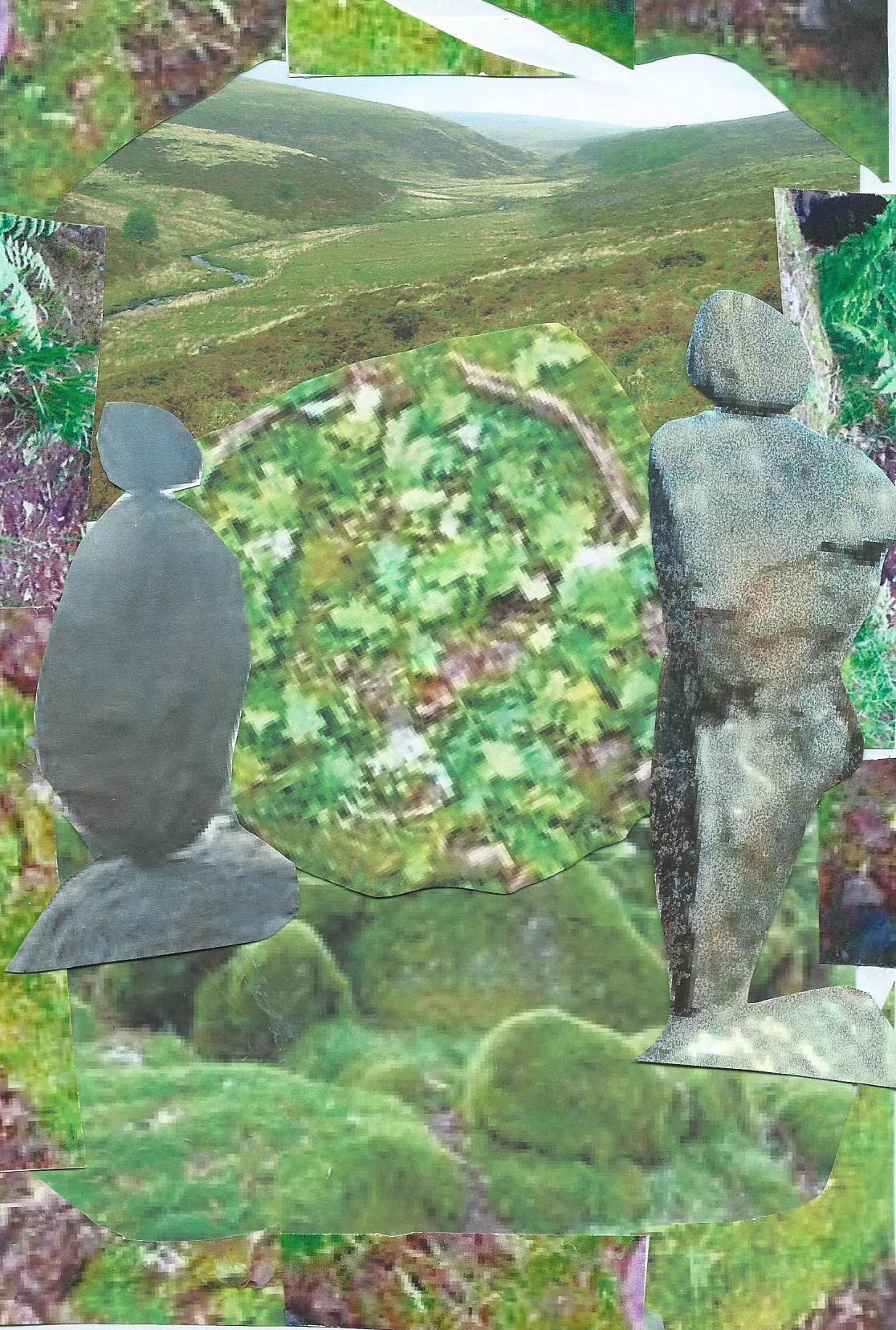
Dartmoor ‘Wistman’s Wood’ with stone sculptures by Michael Loxton.
In the centre is one of our first natural mandalas, created at the woodland on pilgrimage which started a series of circular events exploring the Dartmoor Zodiac. As a prayer card it supported my visioning meditations that captured and celebrated the ‘spirit of the landscape’.
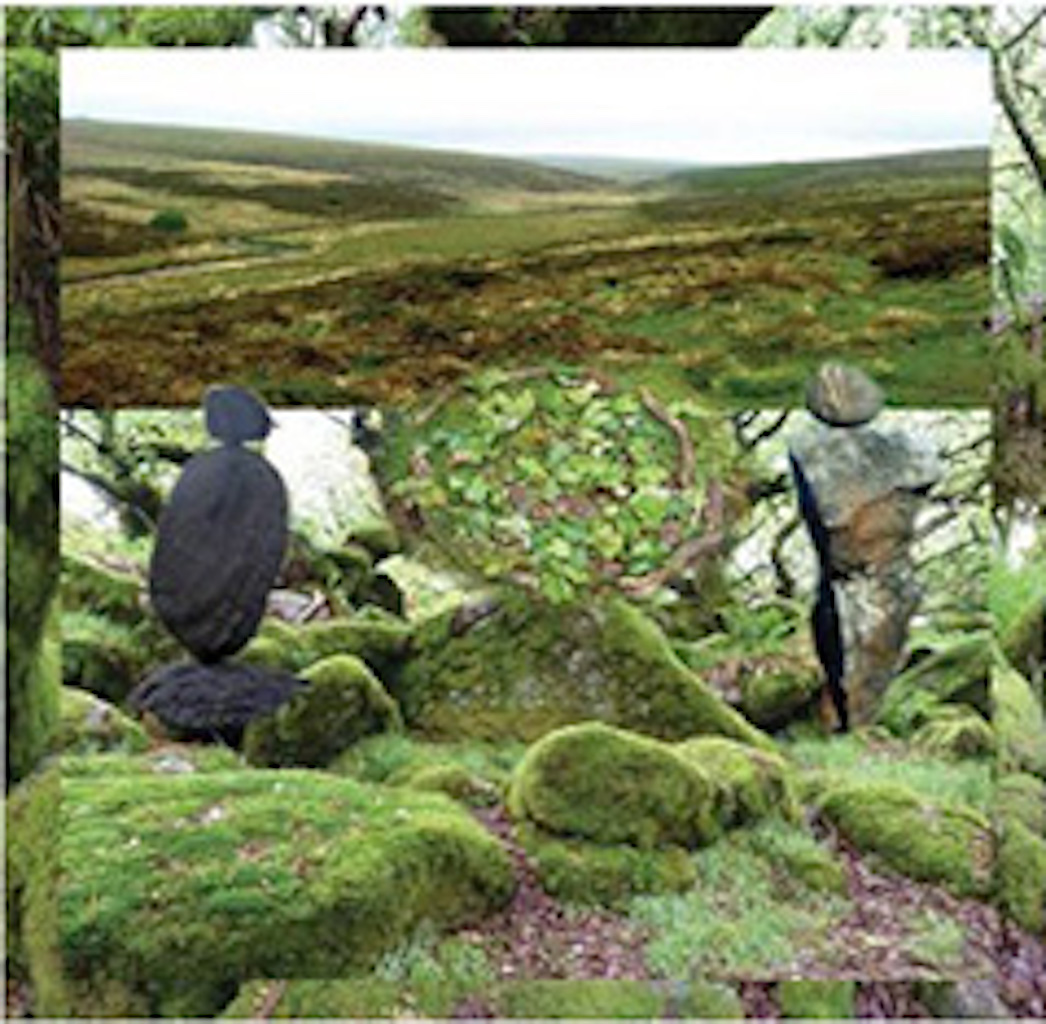
Promoting the ‘Spirit’ of the centre of Dartmoor ‘Wistman’s Wood’ in my ‘Nature is our Teacher’ cards (graphic by Caroline Danby, 2016)
In the 1980’s, I started wandering along the Winchester hills: the South Downs and small roads linking with Farnham and the North Downs. We pilgrimaged and practised love in action, listening to the spirit of place, not knowing what the hidden purposes of the creative spirit of the land had in store to reveal. The barrows above Meon Valley lead me to a dynamic hill-top near ‘Wheely Down’ (interpreted as ‘sacred place’) and a vision of processional rituals of fertility sparking the land’s energy.
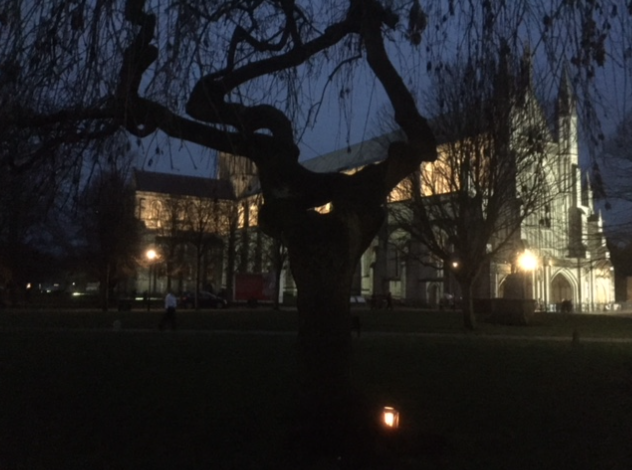
My home town: Winchester Cathedral Close in twilight and lanternlight invoked a sense of the numinous subtle fields of the sacred.
In this decade, I discovered how the South and North Downs were interconnected by an ancient ‘round table’ in the landscape and ‘St Swithun’s Way’ oriented to St Catherine’s chapel outside Guildford… it must link with St Catherine’s Hill, which itself has revealed an ‘eight spoke wheel’ with a stone circle in the South point under Twyford Church. Magdalen Hill leading to ‘The Punchbowl’ and Temple Valley, reached into St Swithun’s Way to Alton and the North Downs.
Where did these sites lead or to what sanctuary did they connect to? How did the ancient pilgrimage routes along prehistoric hill top trackways, link across the larger landscape? I spent some time investigating huge henges in the SE - Hollingboure and Sittingbourne and Ringlemere - that had been uncovered in the SE landscape of Kent between London and Canterbury. These spoke to me as ‘gateway sanctuaries’ between Canterbury and London. The Isles of Thanet and Sheppey were places of power, and highly significant Roman ‘gateways’ into Britain.
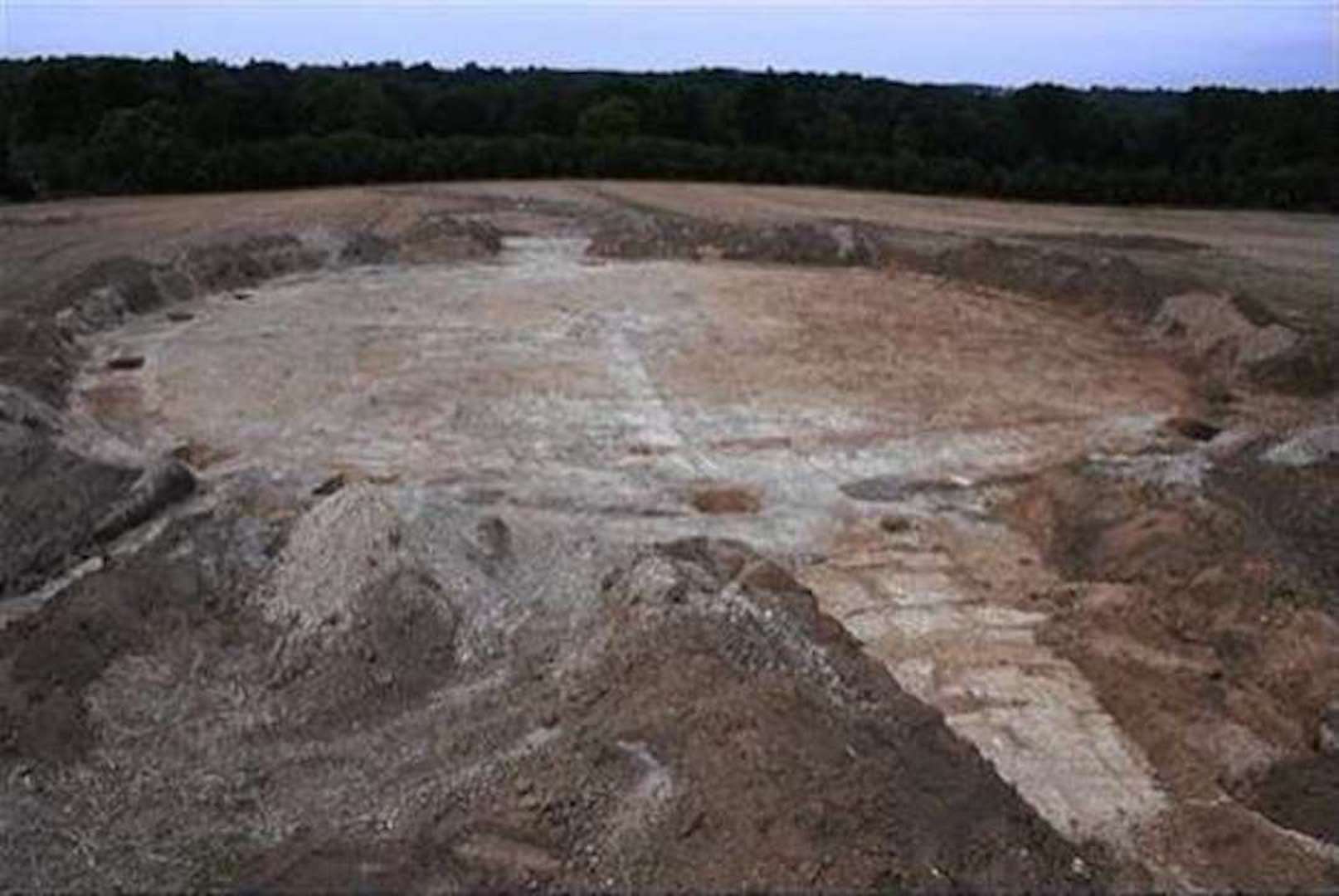
Hollingbourne Henge [Paul Wilkinson: www.kentonline.co.uk/kent/news/ancient-henge-discovered-in-nort-a60919]

Sittingbourne Henge [Canterbury Archaeological Trust:
https://www.ancient-origins.net/news-history-archaeology/6000-year-old-neolithic-henge-and-barrow-uncovered-kent-002003]
Dr Paul Wilkinson, whose team SWAT Archaeology made the discovery, said: "There are not many of these sites around. The 6,000-year-old prehistoric monument, which is 30m in diameter and consists of a pair of ringed ditches, is said to be "as rare as hen's teeth".
"Its purpose is not known, but it may be that the monument was reused as an enclosure for stock management at this time or could formally have been used as a 'sacred way' leading to the Neolithic henge." The outer ring at the Iwade site is thought to be Neolithic, its possible purpose being a ceremonial meeting place. The unbroken inner circle is believed to stem from the Bronze Age and may have been used as a funerary monument to commemorate a dead person or group …’
At the end of the North Downs and aligning with Canterbury, the impressive henges have a purpose and wisdom implied, as monuments to an ancient culture of celebrating solar and cosmic realities in the local environments of culture living close to Nature.
My own ‘landscape’ family bond came through my father’s dedicated enquiry into ancient structures. Nearby to Canterbury are the remains of the ritual landscape of those ancient times at Stone by Faversham.
He had done archeological investigations at the ruins of a chapel where he helped unearth the remains of Romano-Christian temple. Similarly entranced by antiquity as I learned later, he looked out of the train window one day, and the landscape called him to explore… and during the next trip he made a break in his travels to explore the remains of Our Lady of Elverton chapel site. It lies on the main road between Sittingbourne and Canterbury, on an even older trackway beneath the A299.
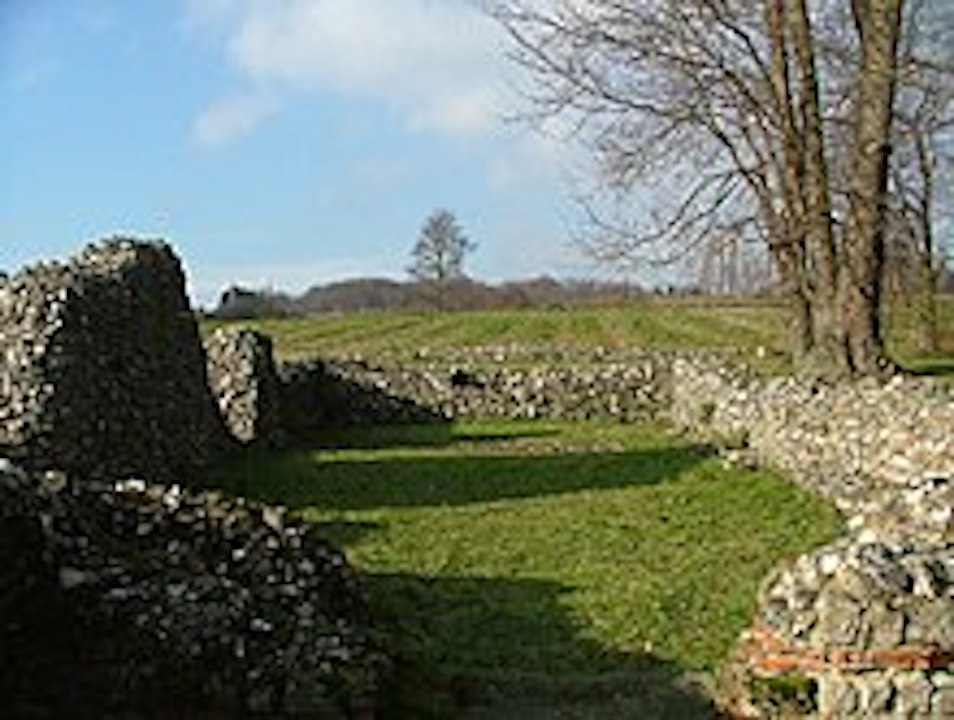
Our Lady of Elverton chapel. ‘It is the only chapel in England known to incorporate the remains of an ancient shrine or mausoleum.’ [https://www.english-heritage.org.uk/visit/places/faversham-stone-chapel-our-lady-of-elverton]
Wikipedia: ‘In 2012, Paul Wilkinson and a team of archeologists discovered and excavated an enormous cockpit-style Roman theatre seating up to 12,000 in Faversham; it is believed to be the first theatre of its kind to be built in Britain.[4] This evidence of Roman occupation has led researchers to believe that Faversham may be the site of Roman Durolevum, mentioned in the Antonine Itinerary.’
From Faversham to the Canterbury Zodiac: I discovered online that one person had been similarly entranced by the landscape and its hidden energetic structure, in and around Canterbury: Fen Lander, author of ‘The Humanoid Landscape’ 2011, made many alignments, spent much time considering zodiac symbology, with personal interpretation that call for a re assessment. ‘According to the author, the name of every settlement, hamlet, village, town and city in England and Wales can be - is meant to be - read like a physiological diagram.Using these labels writ on the map, he reconstitutes and reconstructs the coastline of the UK, and ancient, previously indecipherable phenomena such as Stonehenge, Seahenge, Grimes Graves and others, with the aid of an artistic rendering of this body. It's got wings, a tail and is hermaphrodite - and everyone in England and Wales lives within this Divine Body… [from Amazon.co.uk - book out of print] [https://discover.hubpages.com/religion-philosophy/The-Ley-Lines-and-Lost-Past-Of-North-Kent]
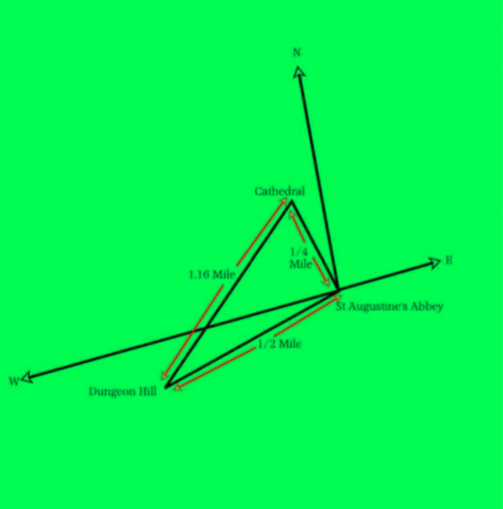
The Canterbury triangle (Fen Lander)
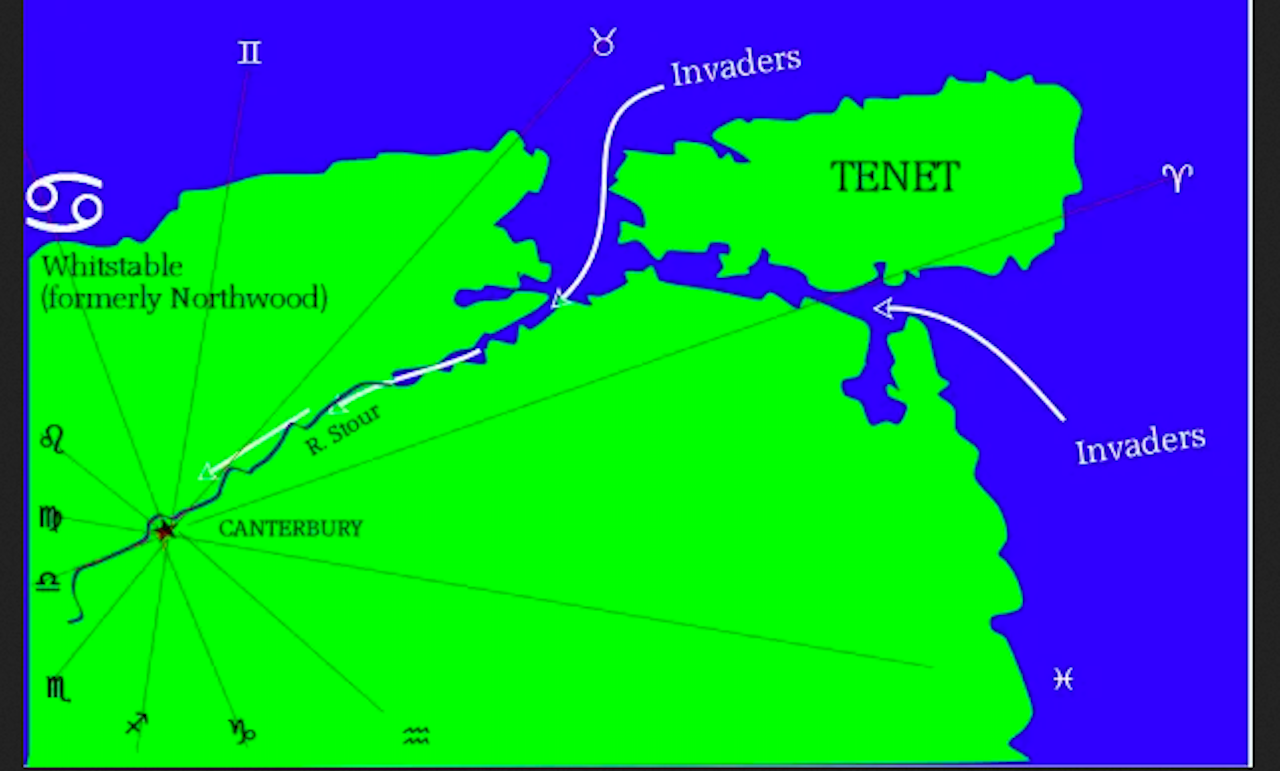
Fen’s Canterbury zodiac and the route from Thanet by the invaders: Romans and Jutes.
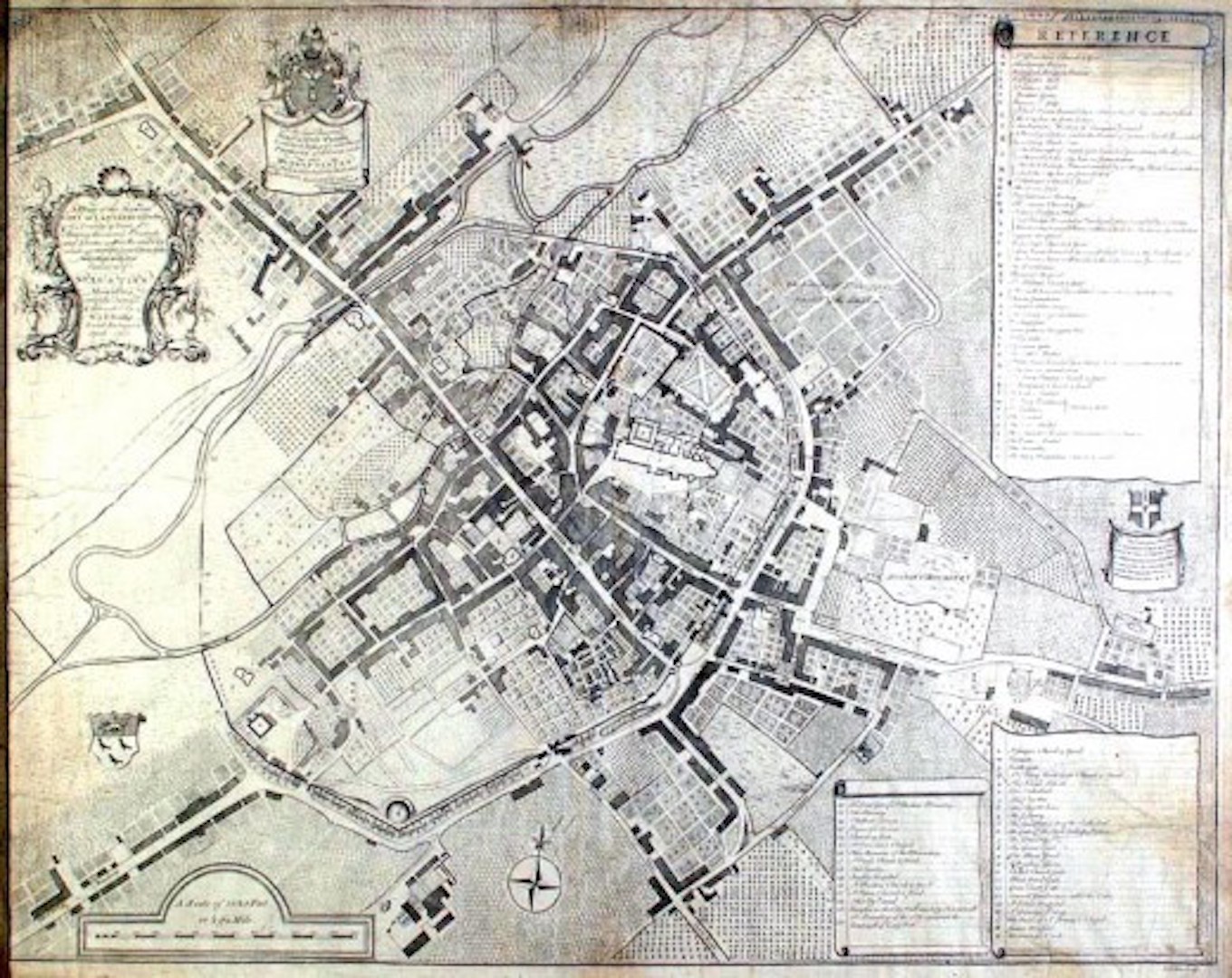
Crossing of the ancient ways in Canterbury and their alignment with [Sacred) NW direction towards London. A saltire cross within a circle is also the underlying plan of the British Zodiac.
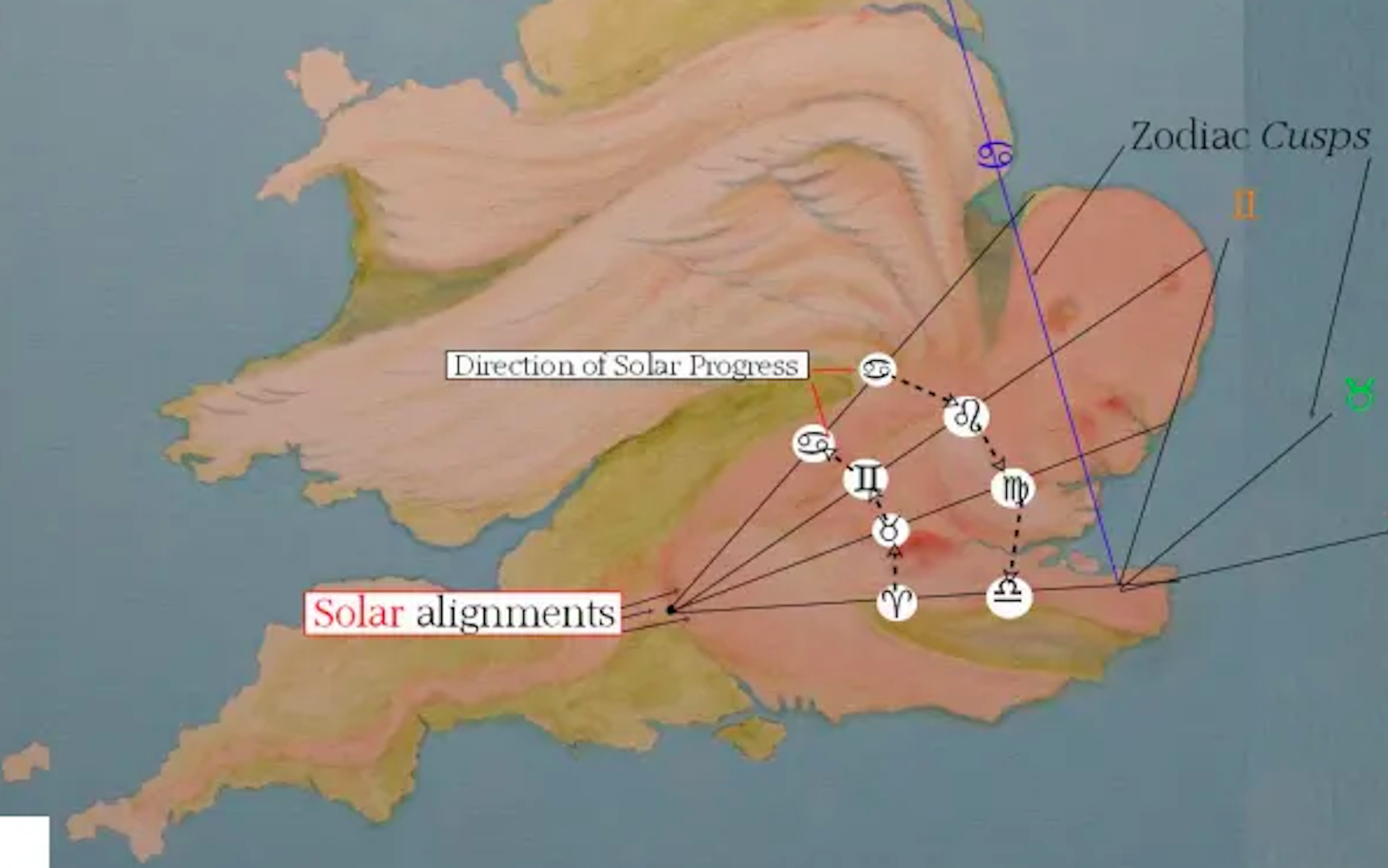
Fen Lander’s Solar alignments from Stonehenge - his own interpretations are a sign of his own enchantment and quest for hidden truths.

Fen Lander’s ‘Wheel of the Weald’- extrapolating his own story which extended through the British Isles and making association with landscapes in other continents… this is his own story of his relationship with our planet and his ‘home ground’.
OUR LOCAL LANDSCAPES ARE PULLING US INTO A SACRED DIALOGUE’.
A Taurus moon holds intuitive answers to the quest for spiritual transformation: earth’s evolution in partnership with Humanity is a transformative path, building a co-created universal light body … our individual light body blended through earthly incarnation. What does it mean to us personally in relationship to our local landscape ‘genus loci’? We find ourselves exploring and loving the land in our home ground, searching for the underlying wisdom.
- what new insights have we unearthed?
- together our mandalas and offerings are a collective ‘beautifying’ of our ‘wheel’ landscape, helping it to turn through local connections.
- The solar eclipse on the 8th portents a stirring climax of this year’s challenging changes by Saturn and Uranus, triggering our Gaian-Human dream of transforming cultural structures into harmony, and beauty.
In essence, as Gatekeepers, we are consolidating the understanding that we each individually have a responsibility to nurture and protect our own ‘genius loci’… to tap into its potential to support our own transformation, and draw upon our own creativity to reveal its inherent harmony and beauty …a world of wonder and promise.
Editors: Sarah Dawkins and Charlotte Yonge, 2022.